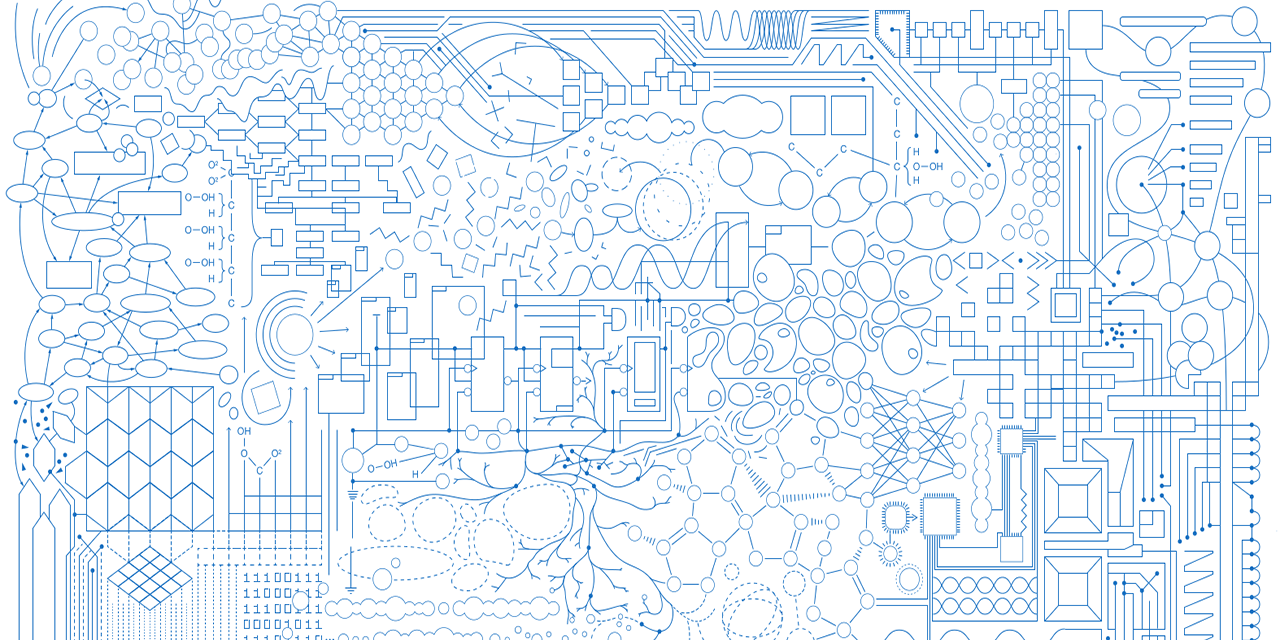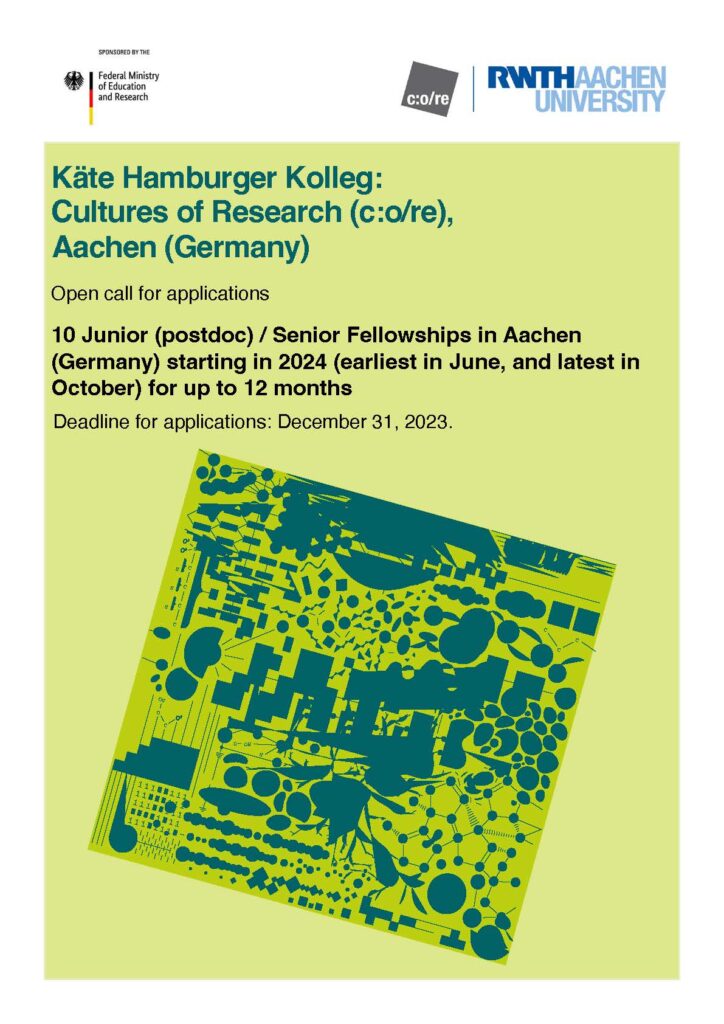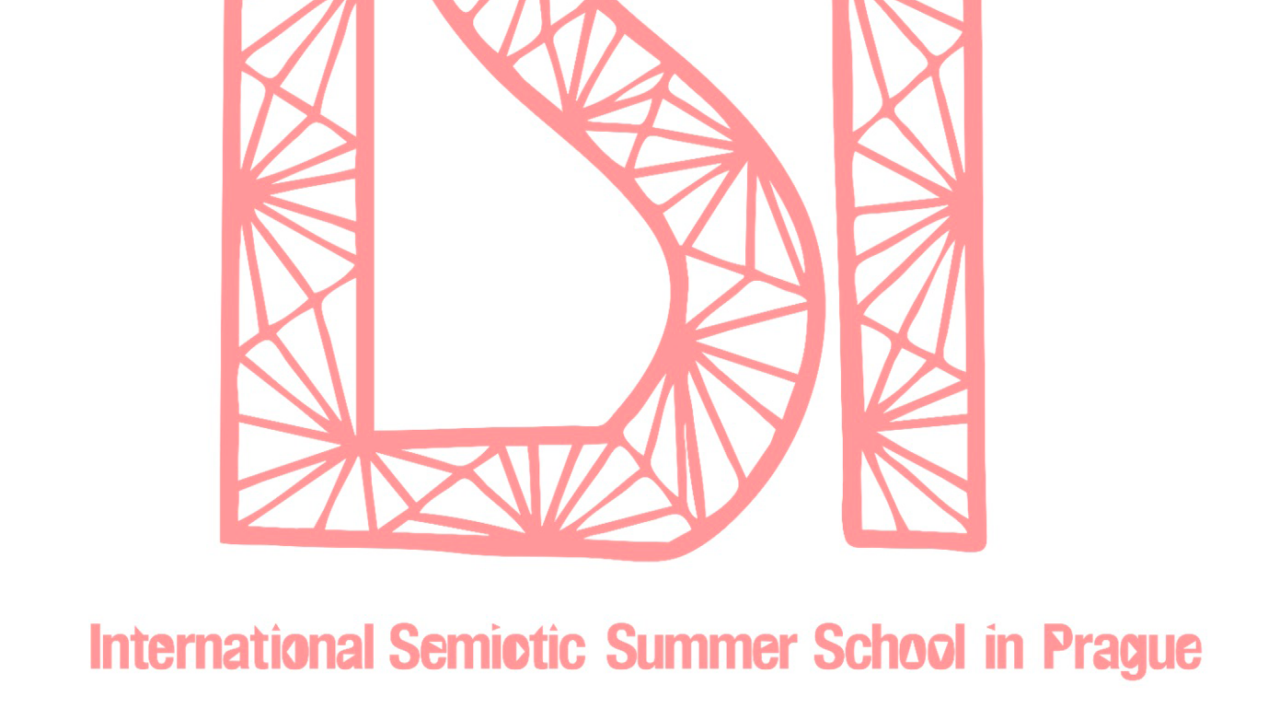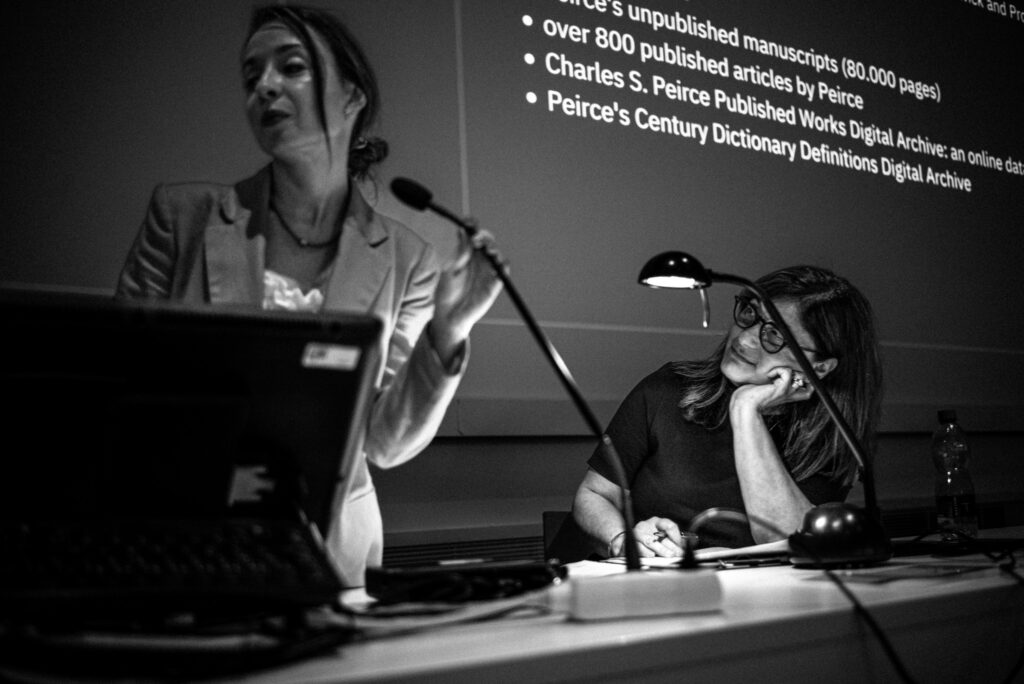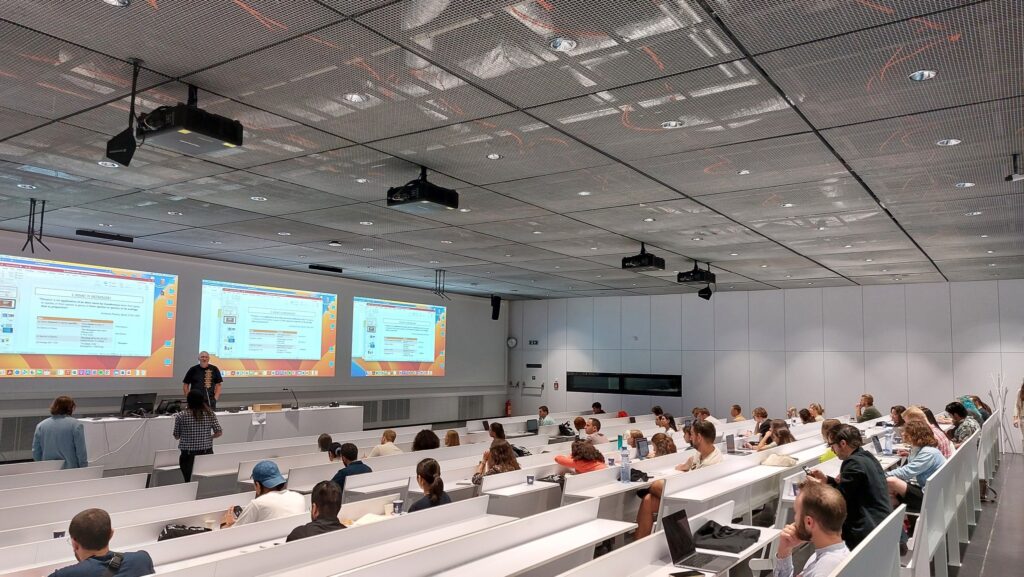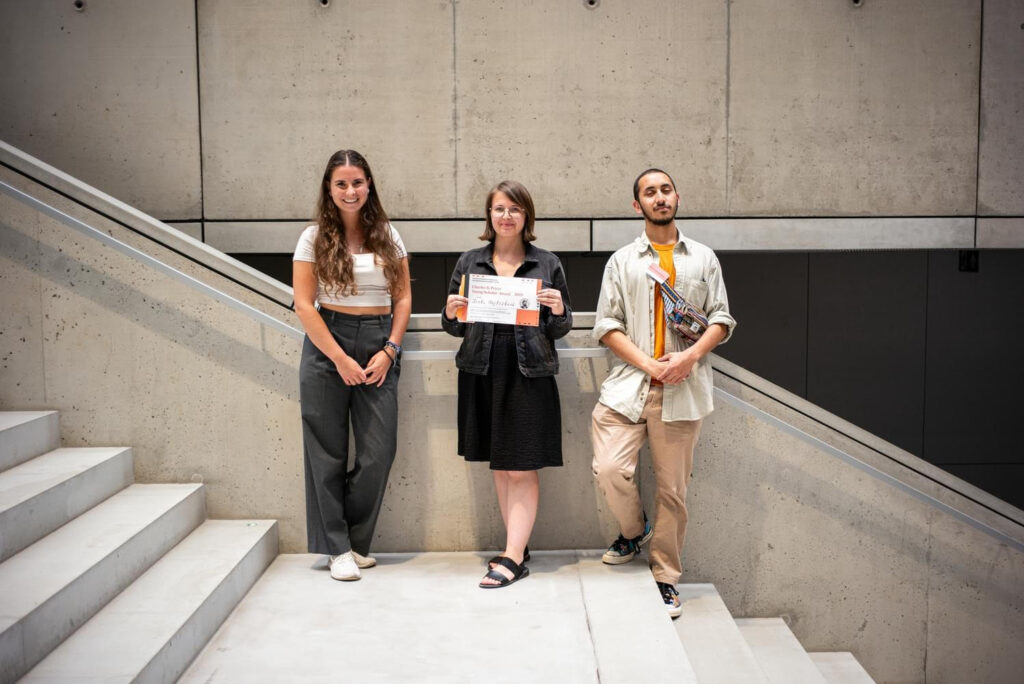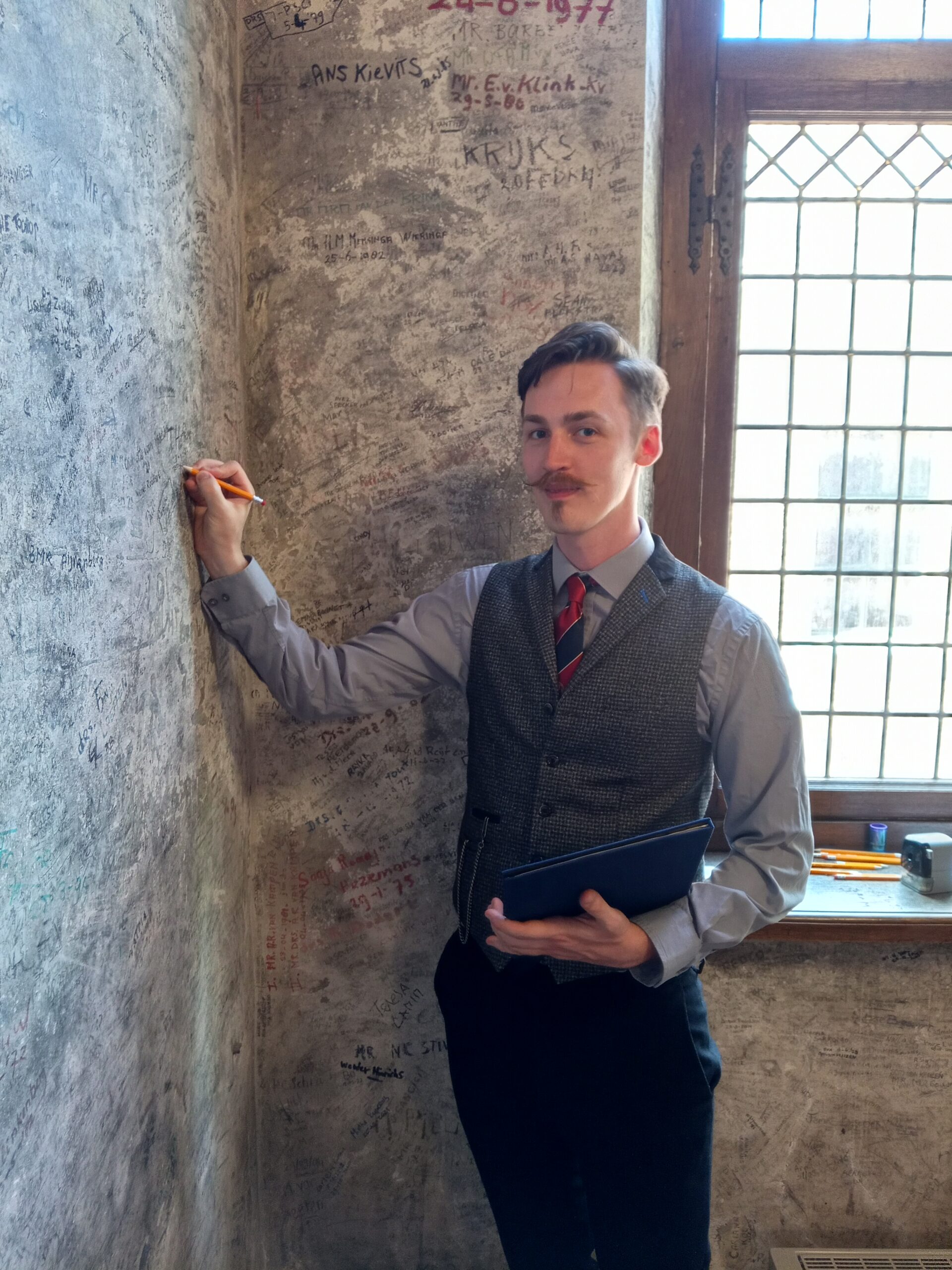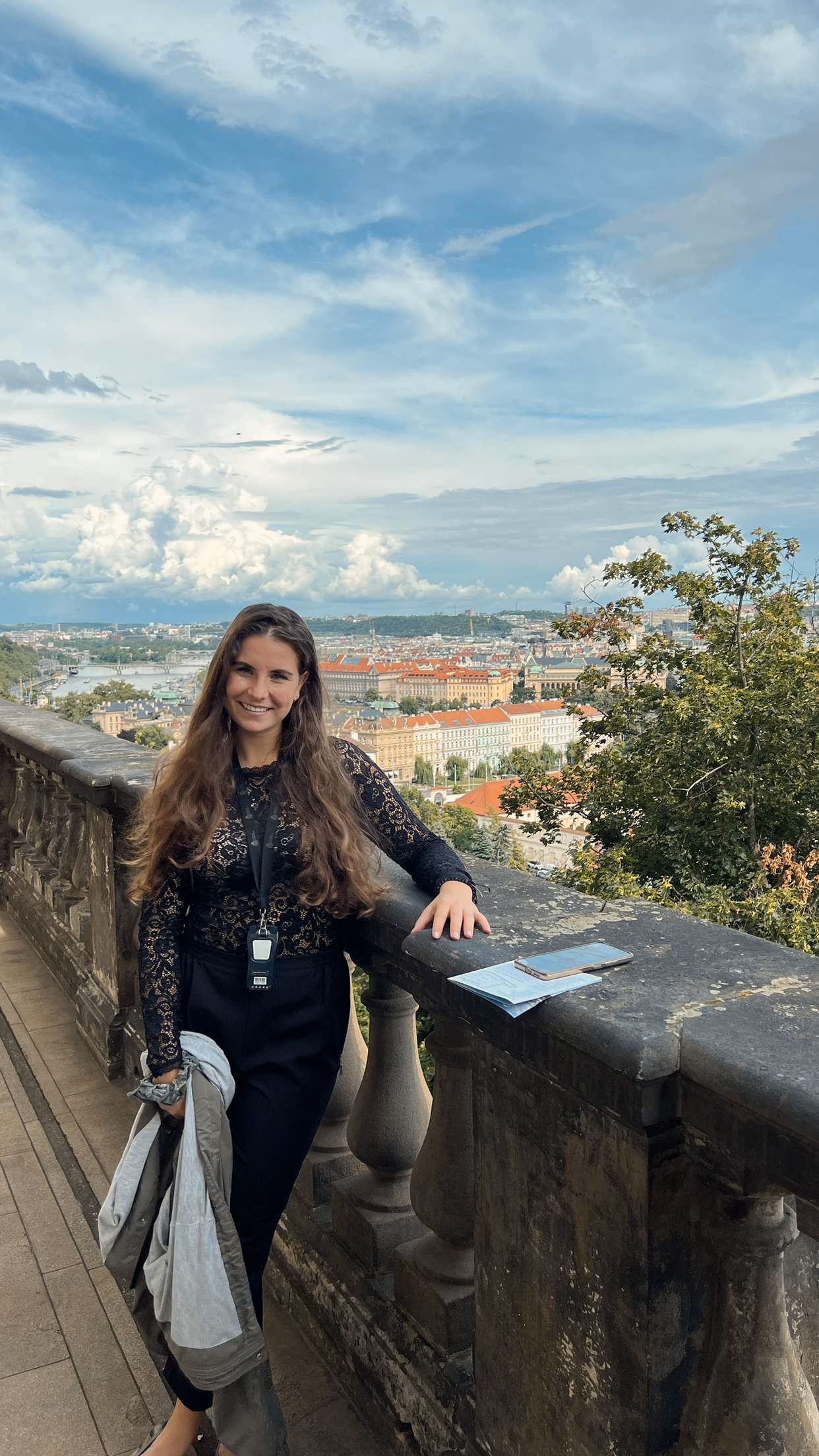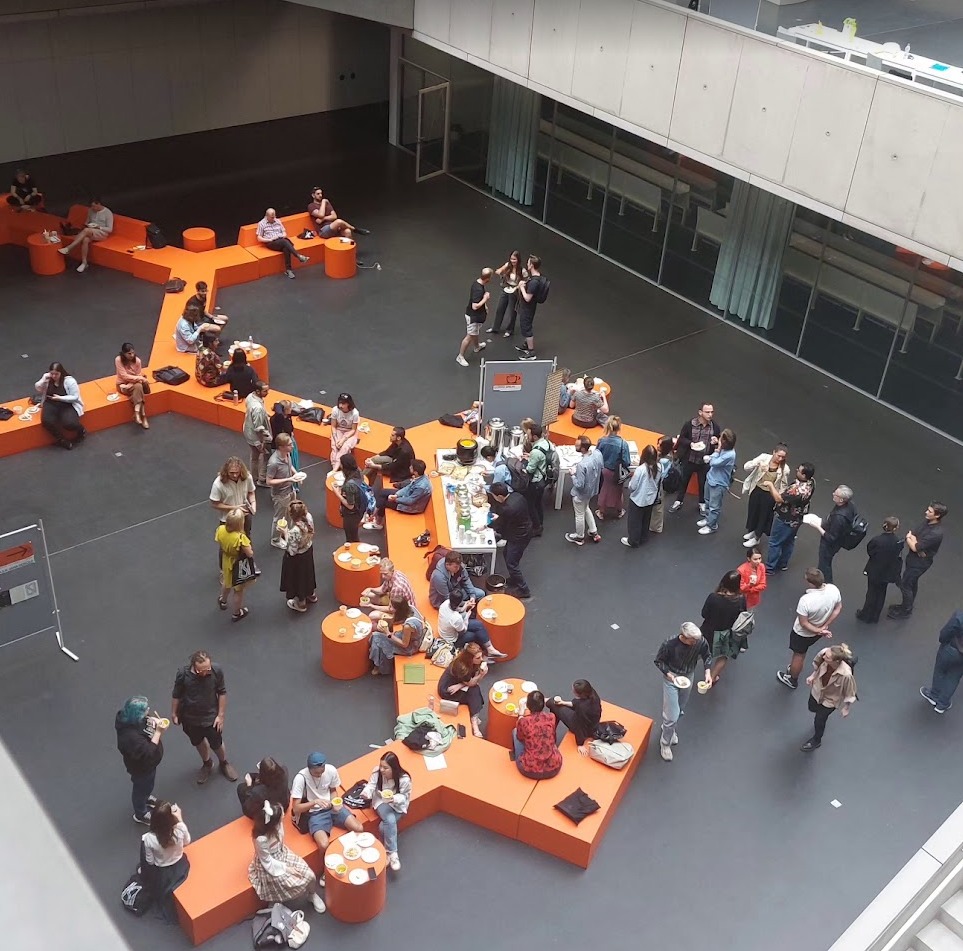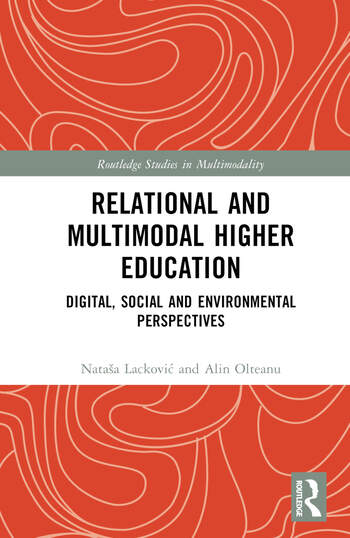Get to know our fellows: Marcus B. Carrier
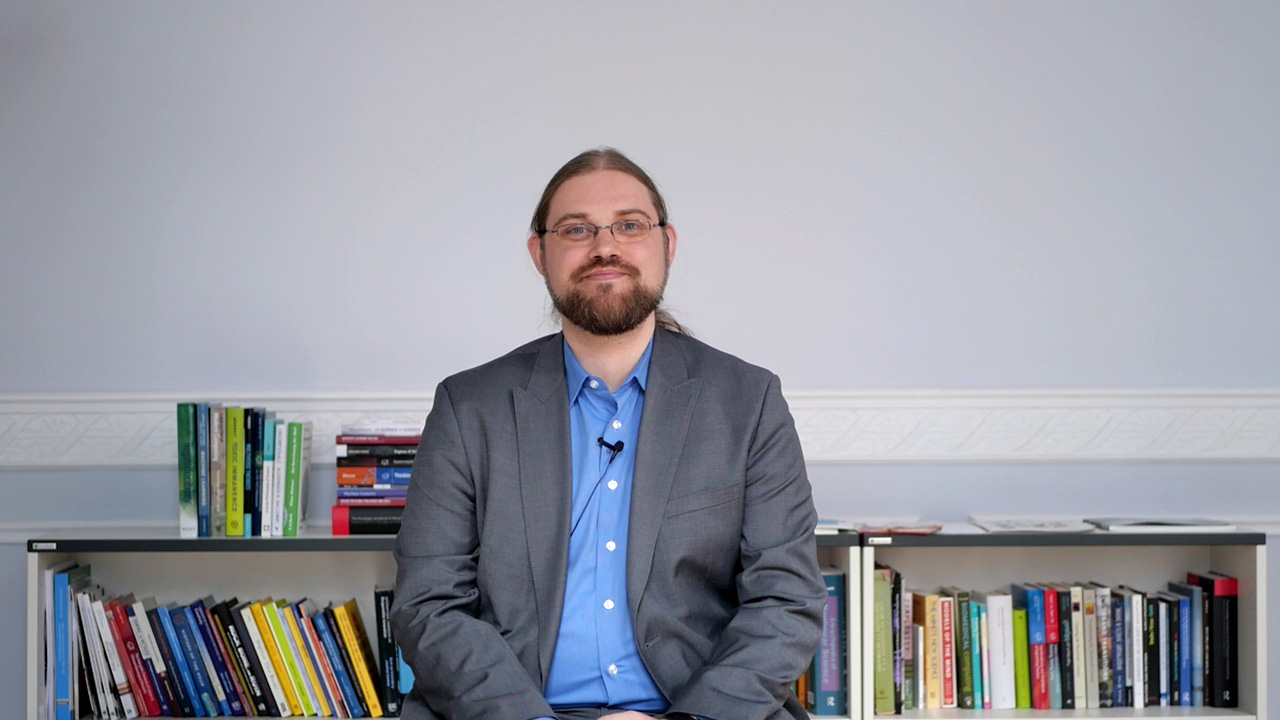
Get to know our current fellows and gain an impression of their research.
In a new series of short videos, we asked them to introduce themselves, talk about their work at c:o/re, the impact of their research on society and give book recommendations.
You can now watch the first video of the historian of science Marcus B. Carrier on our Youtube channel:
Robot, a Laboratory “Animal”: Andrei Korbut on how robots produce knowledge in laboratories
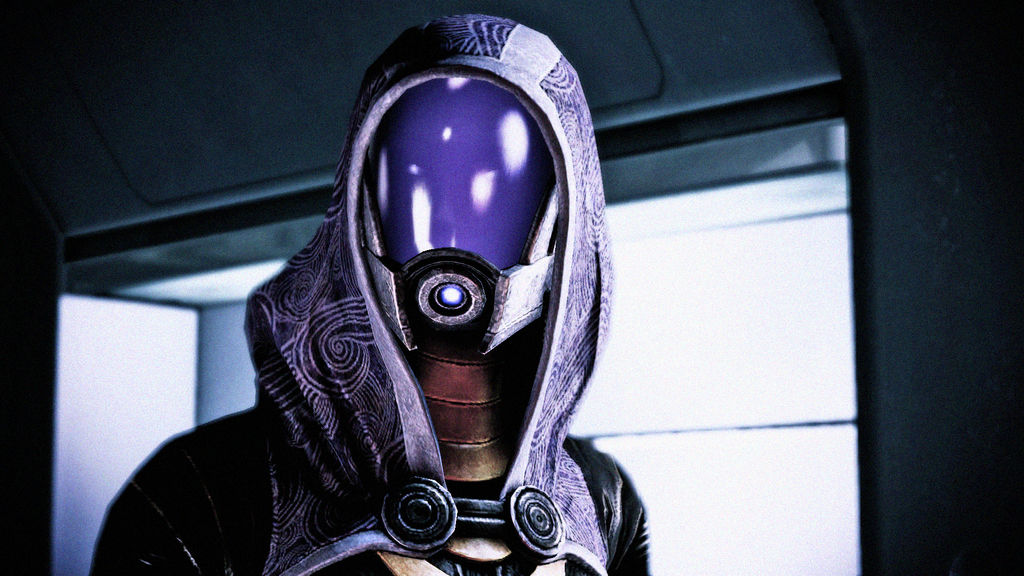
On November 8, Dr. Andrei Korbut warned that he will disappoint philosophers, sociologists and roboticists in what he delivered as the second lecture of the c:o/re Lifelikeness series. He disappointed to disappoint any of these. The Lifelikeness c:o/re lecture series addresses a public even broader and more diverse than previous c:o/re lectures, as it now also engages postgraduate students coming from a vast array of disciplines through the Projekt Leonardo.

Dr Korbut discussed Human-Robot Interaction (HRI) from a perspective enabled by construing robots as laboratory “animals”. He invited the audience to reflect on this view by watching a famous 2016 video produced by Boston Dynamics which shows a researcher (physically) obstructing a robot to complete its task to pick up an object. Dr. Korbut asked the audience what do they feel when watching this scene, whether they feel sorry for the robot and whether the human is bullying? He explained that the feeling the humans might feel when watching such a scene is purposefully employed in laboratory studies on HRI. This led Dr. Korbut to note that HRI is one of the fastest growing and most dynamic subfields in robotics currently, raising salient questions in fields like communication studies, psychology and design. Particularly given the multidisciplinary branching that it implies, it is important to note that robotics is not exclusively academic. HRI has a strong commercial stake.
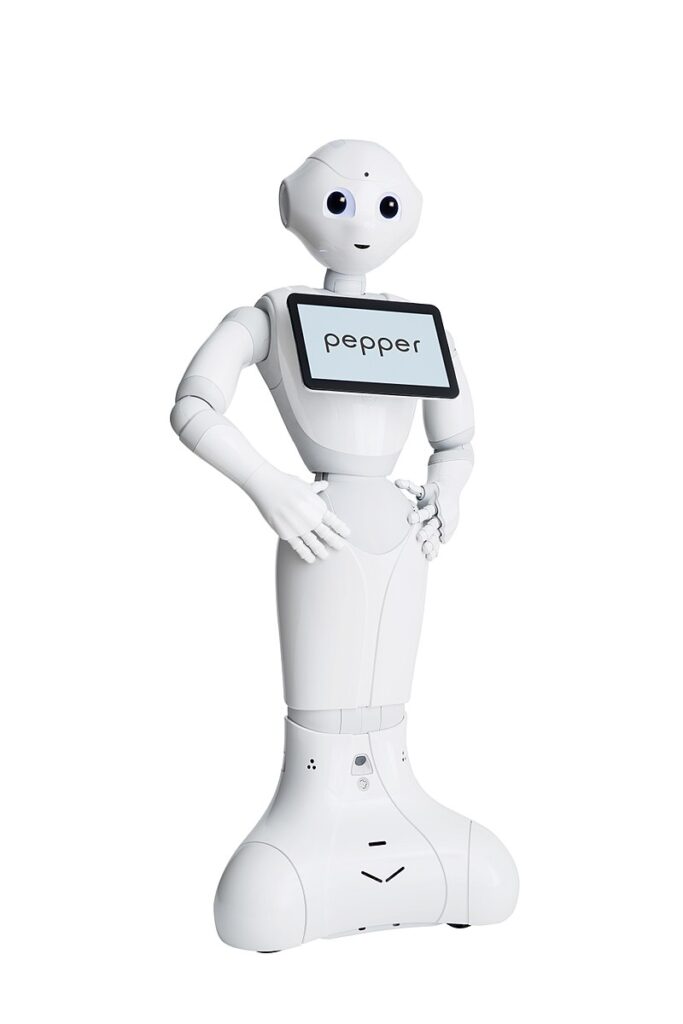
Dr. Korbut explicated the conceptual framework to study robots as contemporary laboratory “animals” as inspired by various notions of types of lifelikeness that can be ascribed to humanoid robots. He argued that robots allow for a closer connection between tools and objects in knowledge production than other types of laboratory “living instruments” because robots are not perceived as “natural objects”. In this line of inquiry, Dr. Korbut’s c:o/re fellowship project focuses on the robot Pepper, designed by SoftBank Robotics. Pepper is a 1.2-meter-tall mobile humanoid robot with 20 degrees of freedom and 20 sensors, microphones and actuators. It can process and synthesize speech in natural language, and it is commercially promoted as capable to recognize basic human emotions. Its appearance is deliberately “cute” and genderless because it is designed to be interacting with by humans in offices, cultural institutions, homes and medical settings. It is currently one of the most popular machines in robotics laboratories globally.
As such, Dr. Korbut is now exploring Pepper’s “academic career”, from manufacturer to publication, where the robotics lab is the crucial passage point. In this inquiry and by pondering on the knowledge that Pepper produces, Dr. Korbut is bringing together but also transcending the disciplinary limitations of laboratory studies in general, robotics laboratories studies, and laboratory animal studies. In laboratory sciences, Dr. Korbut takes Karin Knorr-Cetina‘s notion of epistemic cultures as a guiding optics, where “Laboratory sciences subject natural conditions to a “social overhaul” and derive epistemic effects from the new situation” (Knorr-Cetina 1999, p. 28). Further, he draws an insight from, but also argues for expanding Andreas Bischof’s view that when roboticists “laboratize“, they reduce “the complexity and contingency of social situations” (Bischof 2017: 225, 229). This leads him to observe the importance of Voss’ apparently paradoxical remark that “the practice of representing the robot as both an inanimate object and an animate being is an integral and constructive aspect of roboticists’ work”. At this point, Dr. Korbut remarks the relevance of the term lifelikeness. Particularly, via this term, the discussion is construed in terms of the simultaneous attributing and avoiding the attribution of lifelikeness to machines.
Dr. Korbut advocates employing the term lifelikeness, rather than animacy (in Voss 2021), in this debate because it enables drawing parallels between robotics studies and laboratory animal studies. While lifelikeness may mislead, because it suggests that roboticists may impute “life” to their machines, it opens up the some mitigating possiblities by indicating that “life”, in this discourse, is defined pragmatically, in the context of “laboratory life”, as referring to a property of the object used in the laboratory to produce knowledge. As such, robots are closer to laboratory animals, such as mice and Drosophila than to the wooden idols of animistic practices described by cultural anthropologists.
Dr. Korbut argues for a theory that construes robots as “animals” of very specific kind. Because they are detached from the laboratory environment much more than animals like mice or Drosophila, roboticists can secure a tighter link between tool and object. This link, Dr. Korbut argues, is based on roboticists’ ability to procure and exploit three types of lifelikeness that can be attributed to the robots, all which come down to considering the body as moving, interacting and manipulating.
In this light, Dr. Korbut considers that humans empathise with robots not because we identify with them but because of the particular configuration of robots’ hull – their programming, movements, and the material environment – corresponds to a recognizable type of lifelikeness. In brief, in the laboratory, robots hinder their being perceived as “natural objects”.
References
Bischof, A. 2017. Sozial Maschinen bauen: Epistemische Praktiken der Sozialrobotik. Transcript.
Knorr-Cetina, K. 1999. Epistemic cultures: How the sciences make knowledge. Harvard University Press.
Voss, L. 2021. More than machines? The Attribution of (In)Animacy to Robot Technology. Transcript.
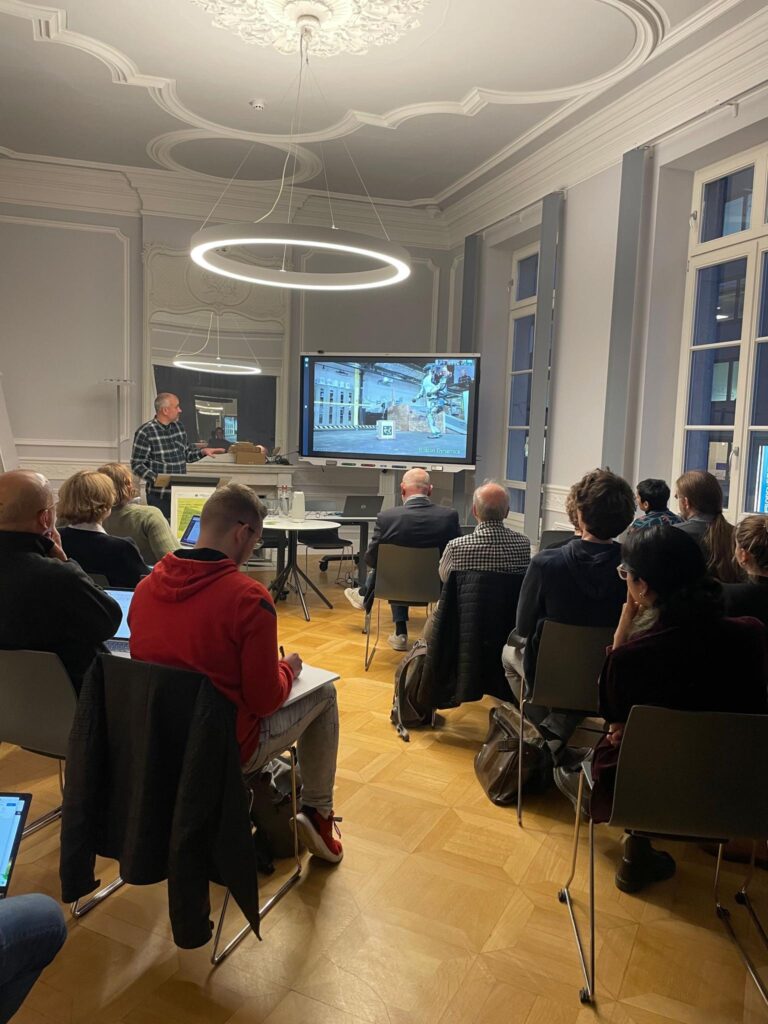
Toxic Material(itie)s: Eco-Material Entanglements in Art
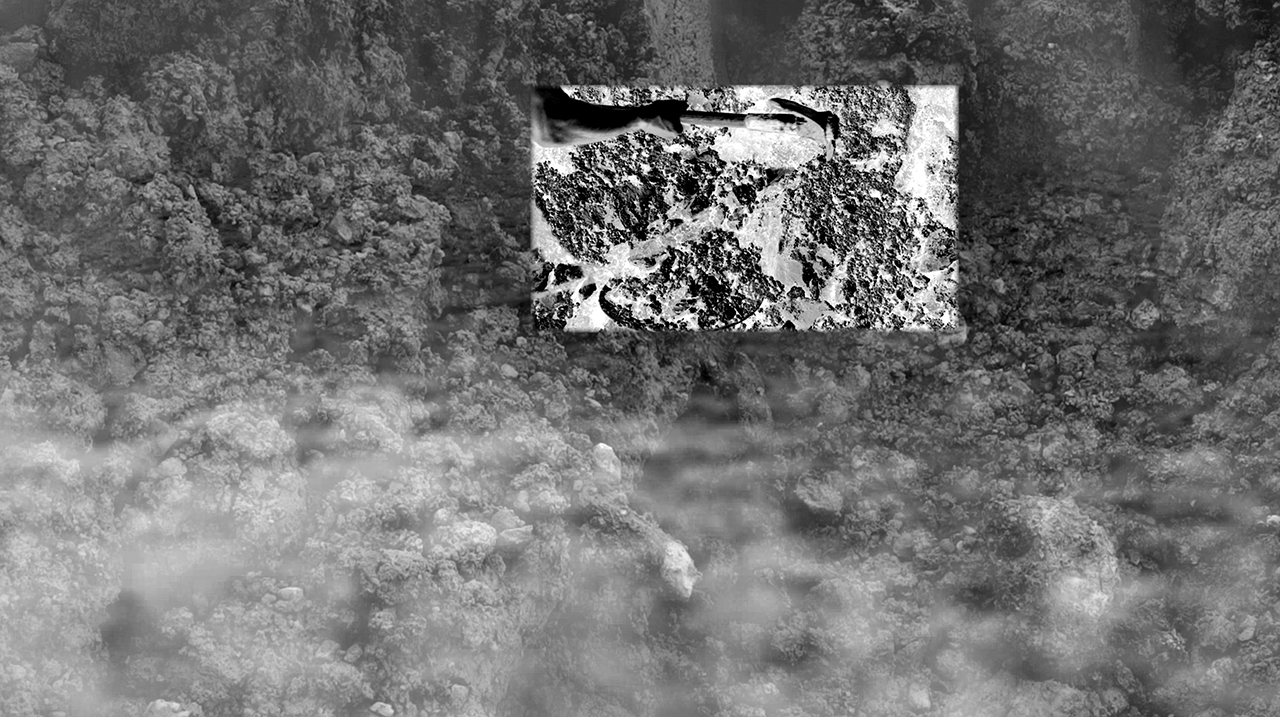
Workshop at the Käte Hamburger Kolleg: Cultures of Research (c:o/re)
6 – 7 December 2023
Organized by
Käte Hamburger Kolleg: Cultures of Research (c:o/re) &
Christian Berger (Universität Siegen), Ruby de Vos (University of Groningen),
Kyveli Mavrokordopoulou (Vrije Universiteit Amsterdam)
Our workshop sets out from the obvious, yet underexplored assumption, that much of the very stuff that art is made of is toxic. Whether working in the studio, in the dark room, in the quarry, or at contaminated sites, artists have been, and continue to be, exposed to a wide range of toxic materials. But exposure always goes hand in hand with its inevitable corollary, pollution—from the dumped toxic waste generated by the production of photographic materials to the air and water pollution generated by marble extraction. The toxicity of artistic materials extends far beyond the hazards of the artist’s job—they are part of larger environmental issues. So what can we learn when we explore artworks through the lens of their materiality within an expanded frame that is attentive to their art historical as well as environmental and sociopolitical context?
See the full program here.
To attend, please register with events@khk.rwth-aachen.de

Call for Applications 2024/25

We are excited to announce that the call for applications for fellowships at c:o/re in 2024/25 is now open.
The Käte Hamburger Kolleg: Cultures of Research (c:o/re) is offering ten fellowships to junior and senior researchers from the humanities, social sciences or STS as well as from natural, life and technical sciences for the academic year 2024/25.
The fellowships can start between June and October 2024.
You can find all information about the current call for applications on this webpage.
Applications must be submitted via our online application platform. The deadline for applications is December 31, 2023.
If you have questions regarding the application process, please have a look at the FAQs on our website or write us an email at info@khk.rwth-aachen.de.
c:o/re meets “Leonardo”

We are excited that the Käte Hamburger Kolleg: Cultures of research (c:o/re) is participating in the “Leonardo” project at RWTH Aachen University this winter semester.

Together with some of our fellows, c:o/re is offering the course “Engineering Life. Imaginaries of Lifelikeness”, which will explore the topic of “Lifelikeness” from different disciplinary perspectives, such as the life and technical sciences, the humanities, art history and science journalism.
The “Leonardo” lectures are open to all RWTH students, regardless of which discipline they study and therefore share the same goal as c:o/re in promoting lecturers and students to use their subject-specific knowledge in a broader context to investigate the challenges within society and science.
You can read more about the “Leonardo” project on their website.
Lifelikeness… from scratch: Director Gabriele Gramelsberger opens the new c:o/re lecture series
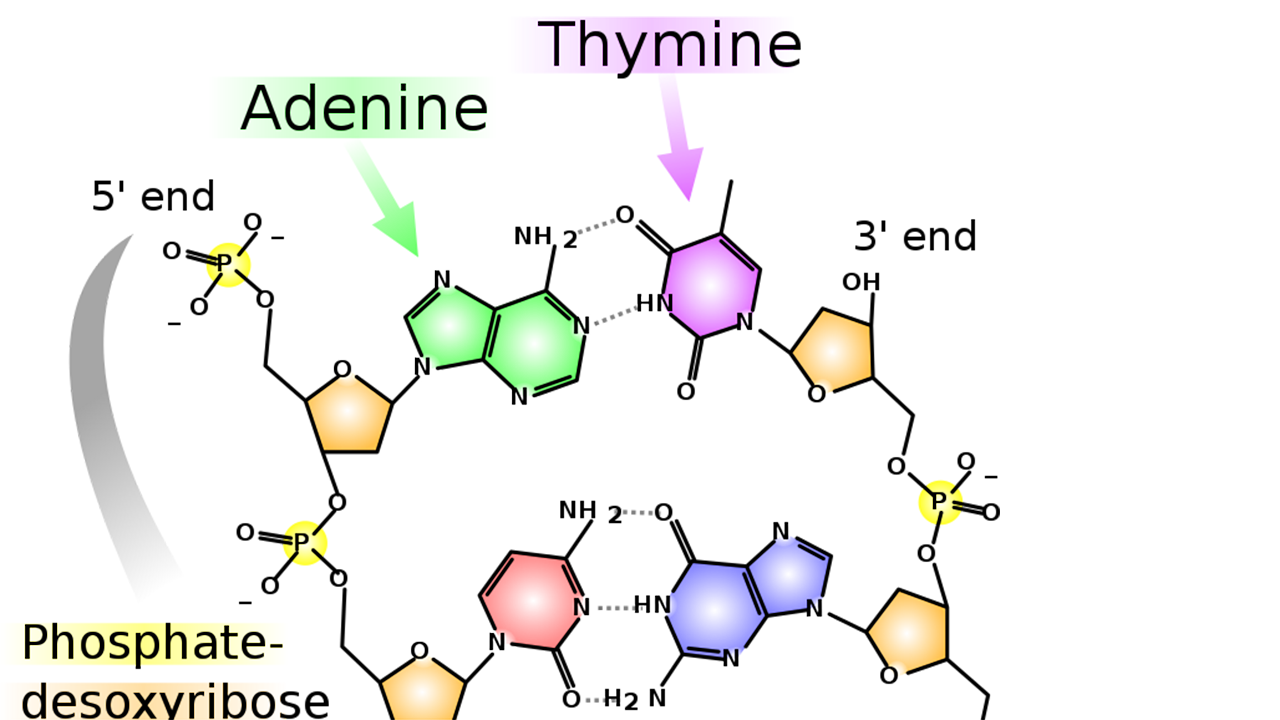
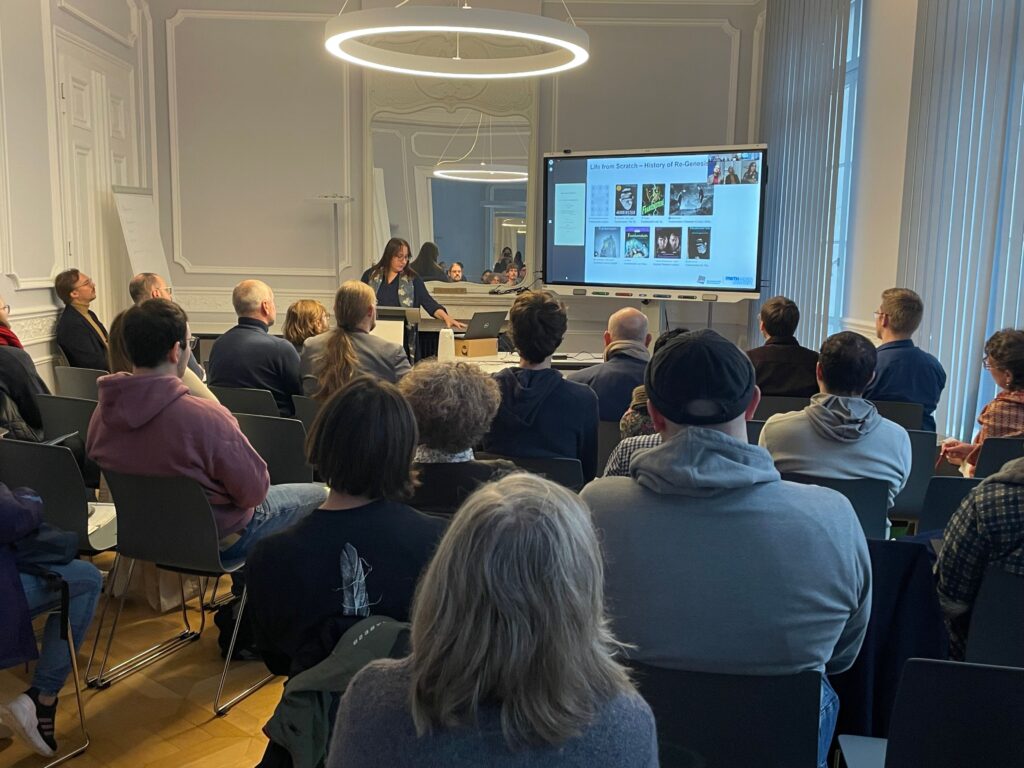
On October 25th, Professor Gabriele Gramelsberger, one of the two c:o/re directors, gave the first talk of the 2023/2024 c:o/re lecture series, which focuses on the slippery but important notion of lifelikeness. The title of her talk, Life from scratch announces an interesting lecture series bringing together arguments from the life sciences to philosophy and all the way to engineering and computational science, where we can but expect the best practice of academic traditions: controversy, that unavoidable result of free and critical thinking.
This semester’s c:o/re lecture series is also part of the Projekt “Leonardo”: Interdisciplinary Teaching for Creative Minds . This project offers interdisciplinary courses on social challenges broadly, offering RWTH Aachen University students from many disciplines the possibility to learn about the eclectic and interdisciplinary work of researchers from various departments.
In this way, c:o/re contributes to the teaching offer of and inter-departmental dialogue at RWTH Aachen University. Debating lifelikeness, as a topic emerging at the interface of the humanities and social sciences, natural sciences and engineering, is one of the contributions that c:o/re brings to foster dialogue across faculties and bring together local scholars and its research fellows.
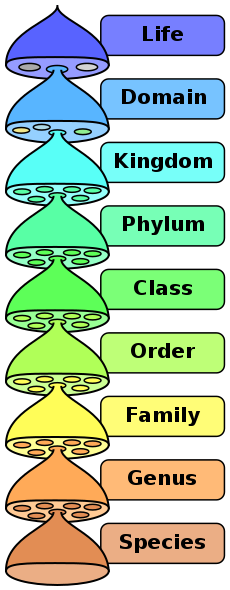
In this first talk of the series, Professor Gramelsberger inspired a lively discussion among c:o/re researchers and colleagues and students from many departments across RWTH Aachen University. She offered a broadly informative and encompassing overview of synthetic biology, with a focus on the enduring human fascination to solve the puzzle of life, such as pursued currently in astrobiology.
First, Professor Gramelsberger took the audience on a journey through the history of biology, particularly as seen from the contemporary vantage point of ReGenesis. The talk proceeded from early efforts to obtain (a)biogenesis in laboratories to contemporary experiments and efforts, such as revolving around the concept of the domain Synthetica.
Introducing the main guiding concepts, such as abiogenesis, Professor Gramelsberger explained that the ideal to create life is, probably, as old as humanity. She pointed to the enduring cultural fascination with creating life, as displayed in novels like Mary Shelley’s Frankenstein (1818) and films like Fritz Lang’s Metropolis (1927), or in Jewish mythical folklore of the Golem, the animated mythical creature created from mud that is said to have roamed 16th-century Prague. Cultural imaginaries of humans creating new life have taken inspiration, of course, from state-of-the-art scientific undertakings. For example, Mary Shelley likely took inspiration from Luigi Galvani’s experiments in the 1780s. Much later, in 1952, the type of thinking falling under the label electric spark theory was put to the test in the Miller-Urey experiment (see Miller 1953), with impressive results. Researchers observed the formation of amino acids by applying electricity to water (H2O), methane (CH4), ammonia (NH3) and hydrogen (H2), a setting meant to simulate the conditions, as thought at the time, of the prebiotic Earth atmosphere.

Having presented these ideas to the students, Professor Gramelsberger set the stage for an informative overview of the intellectual history covering the works of Jacques Loeb (1852-1924), Alfonso Herrera (1868-1942) and Stéphane Leduc (1853-1939).
An interesting realization that this history reveals is that the biological problem of life keeps slipping. Every time when biological science finds the solution to what it construed as the question of life, it reveals that the question of life was misplaced. For example, merely creating an organic molecule from inorganic matter or protoplasm from mineral substances is not creating life. As spectacular as this achievement may be, the most important insight it provides is that merely organic molecules or DNA is not life, as we experience and recognize it. Hence, biology can be said to reveal what life is in a positive heuristics of increasingly understanding what life is not.
The talk then proceeded to present more recent molecular biology, as enabled by the genetic paradigm, and exemplified in the work of figures like Craig Venter or Stanley Cohen and Herbert Boyer. Professor Gramelsberger discussed recent efforts in the pursuit of De-novo organisms in an engaging manner, making the main notion here comprehensible for both fellow academics and postgraduate students. She offered an overview of the main types of De-novo approaches, namely Minimal genome, Biobrick (engineering) and Computer-aided design (CAD). This opened the stage for reflecting on cutting-edge and speculative considerations of the domain of Synthetica, as a new unit in the vocabulary of biological taxonomy. The talk raised important questions about the future of life, bio-hacking and genetic literacy, as one branch of new literacies. Here, Professor Gramelsberger noted the pioneering scholarship, such as George Church’s ReGenesis (2012), Amy Web & Andrew Hessel’s The genesis machine (2022) and Jamie Metzl’s Hacking Darwin (2019).
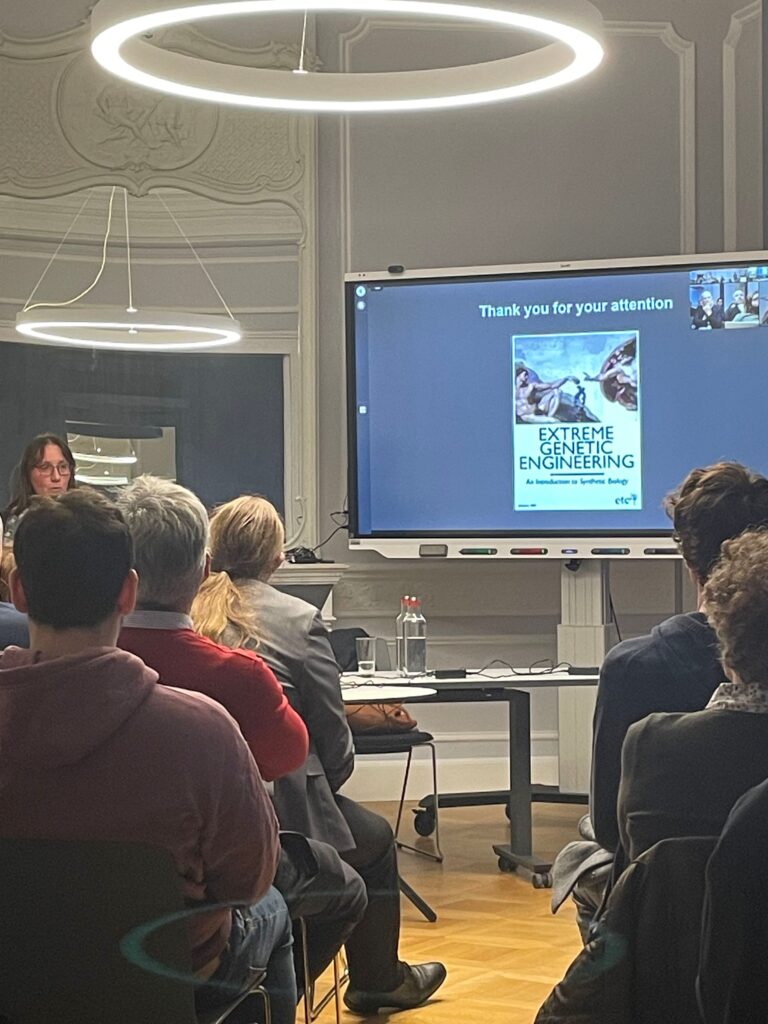
Overall, the talk fostered an interdisciplinary dialogue, also stiring the interest of students by reflecting philosophically on the many questions accumulated and meliorated through the history of (synthetic) biology. For example, the the role of the concept of oscillators was noted, across disciplines, in ushering a process instead of object ontology. Questions and discussions covered the conceptualisation of genetic engineering and synthetic biology, mechanical reductionism and vitalism, industrial and economic motivations and, of course, a wide array of ethical considerations.
With this intriguing introduction, we look forward to the next talks in the c:o/re Lifelikeness series, which also addresses students through Projekt Leonardo.
References
Church, George. 2012. ReGenesis: How Synthetic Biology Will Reinvent Nature and Ourselves. Basic Books.
ETC group. 2007. Extreme genetic engineering: An introduction to synthetic biology. ETC group.
Metzl, Jamie. 2019. Hacking Darwin: Genetic engineering and the future of humanity. Sourcebooks, Inc..
Miller, Stanley L. 1953. Production of amino acids under possible primitive earth conditions, Science 117 (3046): 528-529.
Webb, Amy, Hessel, Andrew. 2022. The Genesis Machine: Our Quest to Rewrite Life in the Age of Synthetic Biology. Hachette.

Arbeitsgruppe: Technofeminismus. Feministische Perspektiven auf Wissenschaft und Technik
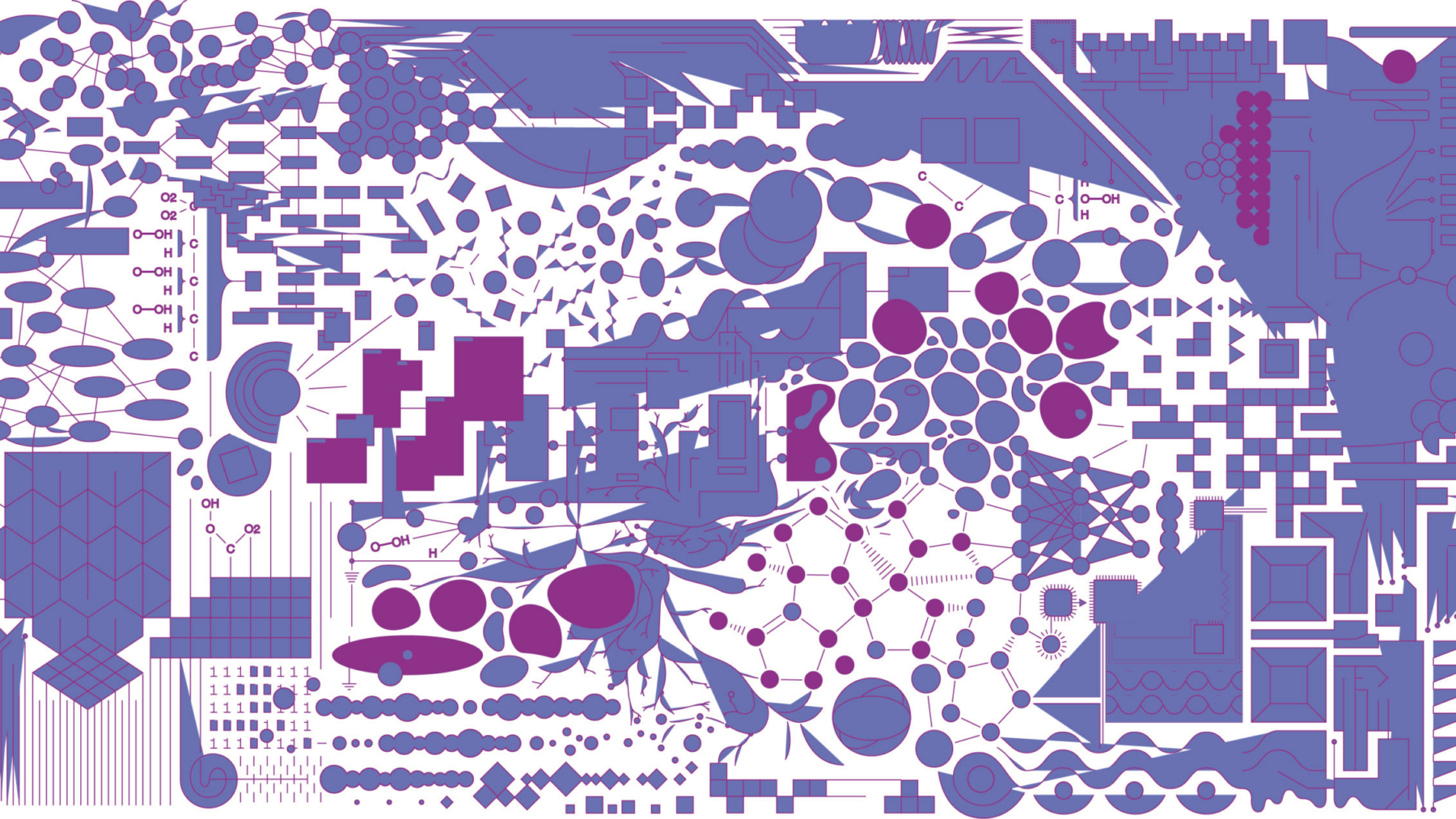
Ist Technologie neutral oder kann sie sexistische Vorurteile beinhalten? Welche Formen der Ausbeutung von FLINTA* (Frauen, Lesben, intergeschlechtliche, nichtbinäre, trans und agender Personen) entstehen durch digitale Arbeit? Was lehrt uns der Schwarze Feminismus über digitale und technische Formen der Ausbeutung und Geschlechterungerechtigkeit? Können wir feministisch handeln und Objektivität in der Wissenschaft beanspruchen?
Ab dem kommenden Semester wird es an der RWTH Aachen eine Arbeitsgruppe geben, in der diese Fragen gestellt werden. In der Gruppe wird anhand von Texten oder Videobeiträgen diskutiert, die von den Teilnehmenden der Arbeitsgruppe vorgeschlagen werden können.
Erstes Treffen: 17.10.23 um 15.00 Uhr in der Theaterstraße 75, Aachen.
Die Gruppe ist offen für alle Studierenden und Dozent*innen der RWTH Aachen. Es sind keine Vorkenntnisse erforderlich. Wir bitten nur um eine Anmeldung unter: technofeminismus@khk.rwth-aachen.de
Bei Fragen, Anregungen oder Ideen kannst Du uns gerne eine E-Mail schreiben.
New book – Relational and multimodal higher education: Digital, social and environmental perspectives
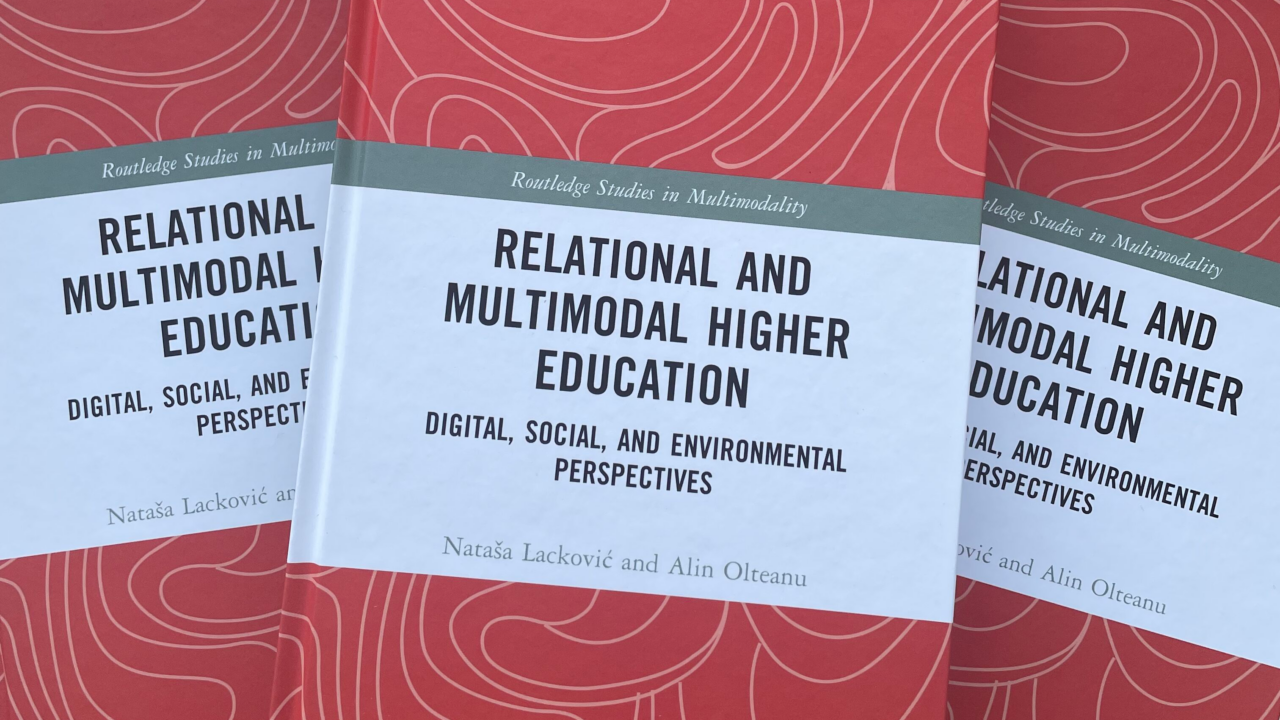
The new book by Dr. Natasa Lackovic (Lancaster University) and c:o/re team member Dr. Alin Olteanu has just been published in the book series Routledge Studies in Multimodality, managed by Professor Kay O’Halloran.
The book Relational and Multimodal Higher Education: Digital, Social and Environmental Perspectives proposes a relational turn by conceptualizing knowledge and pedagogy as relational and multimodal, analyzed through three dimensions of relationality: social, technological, and environmental.
The volume draws on interdisciplinary approaches that make a case for integrating these interconnected and distinct dimensions in higher education theory and practice. Its novelty lies in combining such a variety of perspectives with Peircean semiotics to explore what it means to learn and live relationally. It emphasizes the importance of critical reflection, rooted in an environmental understanding of knowledge and digital media. This approach integrates materiality, place, and space in higher education, positioning caring, critically reflective and imaginative interactions and interpretations as central for knowledge growth. The volume features practical case studies of relational pedagogy through dialogues with diverse higher education practitioners, which embrace expression and creation through more than one dominant modality of communication and being. The book envisions students and educators as relational agents, with relational awareness and responsibility, aware of their multimodal identities. It highlights how a relational multimodal paradigm can serve as a way forward for universities to address global challenges concerning social, (post)digital, and environmental futures.
This innovative book should be of interest to scholars, students, teachers, and policymakers in higher education, semiotics and multimodality, as well as postdigital, sociomaterial and futures studies.
Lecture Series Winter 2023/24: Lifelikeness
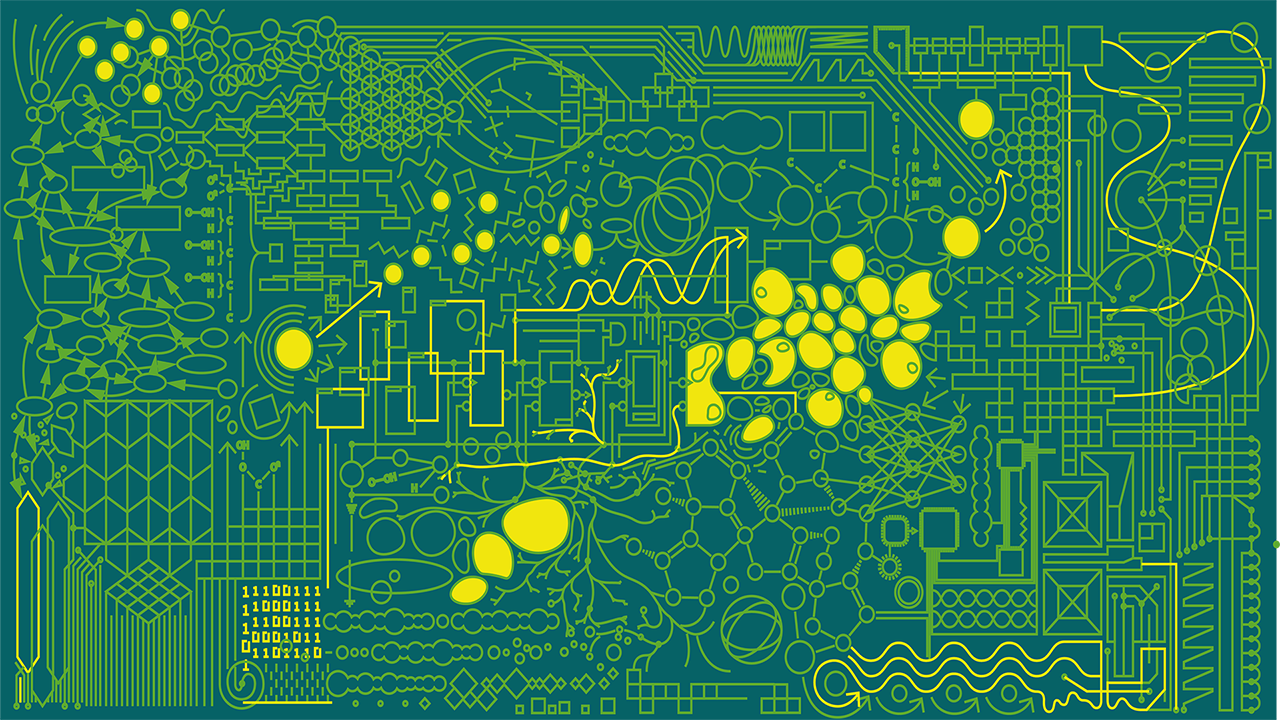
We are happy to announce the program for our Lecture Series during the winter 2023/24. The topic of this semester’s series of lectures is Lifelikeness.
Our invited speakers will explore Lifelikeness through different disciplinary perspectives, such as life and technical sciences, humanities, art history and science journalism.
Please find an overview of the dates and speakers in the program.
The lecture series takes place in presence and online from October 25h, 2023 to February 7th, 2024, Wednesdays from 5 to 6.30 pm. Please register with events@khk.rwth-aachen.de.
| 25.10.2023 Gabriele Gramelsberger (RWTH Aachen University): Life from scratch | ||
| 08.11.2023 Andrei Korbut (University of Bremen, c:o/re Fellow): Robot, a Laboratory “Animal”: Producing Knowledge through and about Human-Robot Interaction | ||
| 22.11.2023 Emre Neftci (Forschungszentrum Jülich): Neuromorphic Computing: Inspiration from the Brain for Future AI Technologies | ||
| 06.12.2023 Esther Leslie (Birkbeck, University of London): Art’s Mediation as Remediation: On Some Artworks and their reuses of Toxic Materials | ||
| 10.01.2024 Massimiliano Simons (Maastricht University): Towards an Ecology of Technoscience | ||
| 24.01.2024 Ben Woodard (ICI Berlin): Flowers for Agouti: Epigenetics and the Genealogy of Uplift | ||
| 07.02.2024 Michael Friedman (Tel Aviv University, c:o/re Fellow): Bio-inspired Materials and Dreams of Inspiration |

